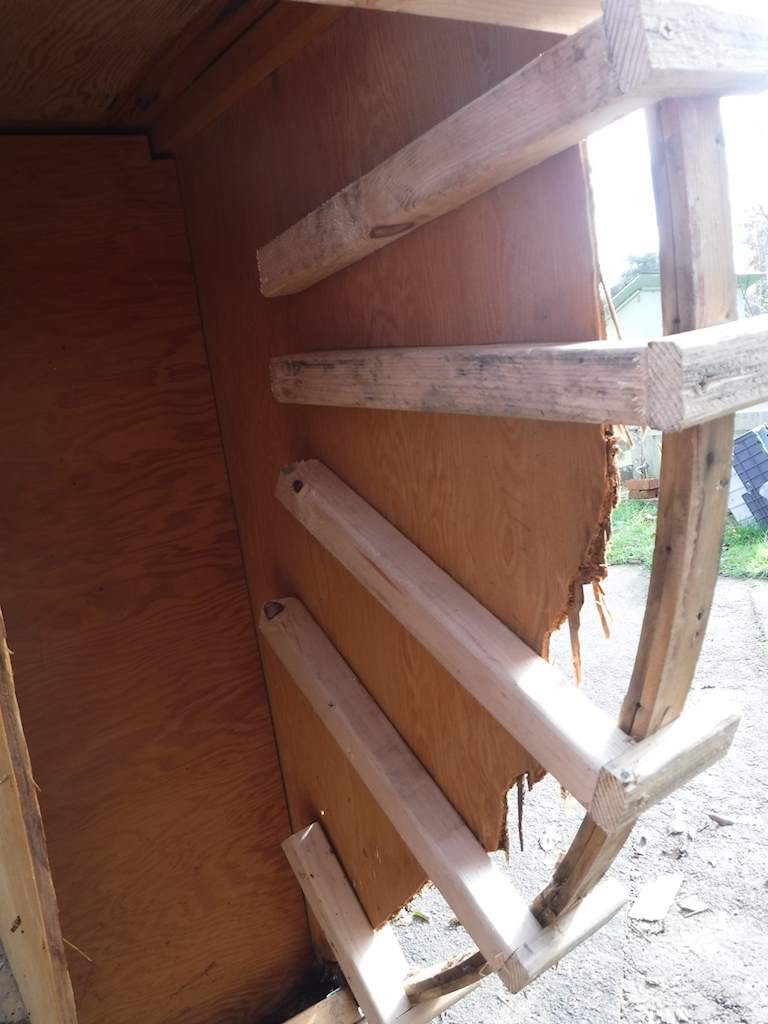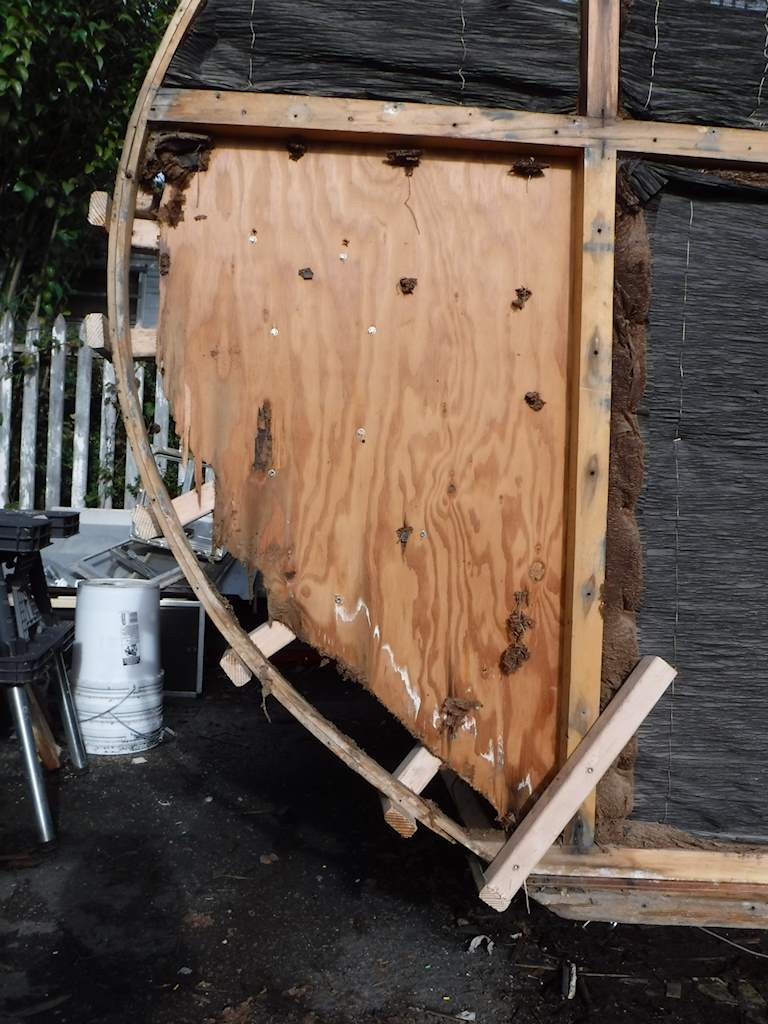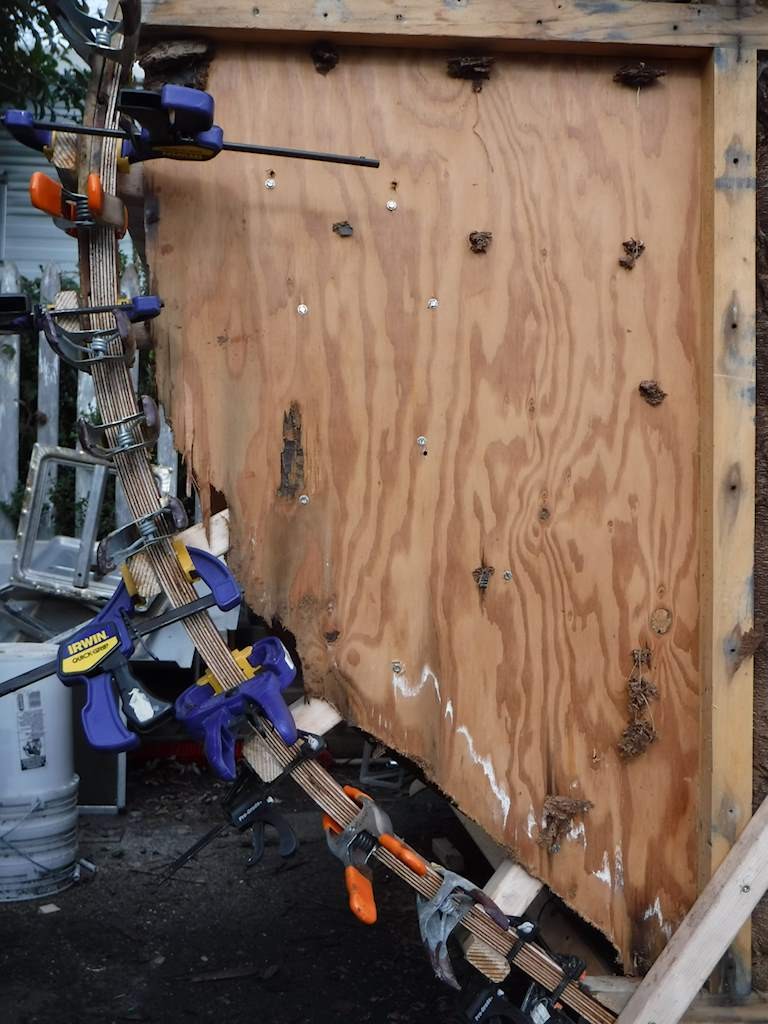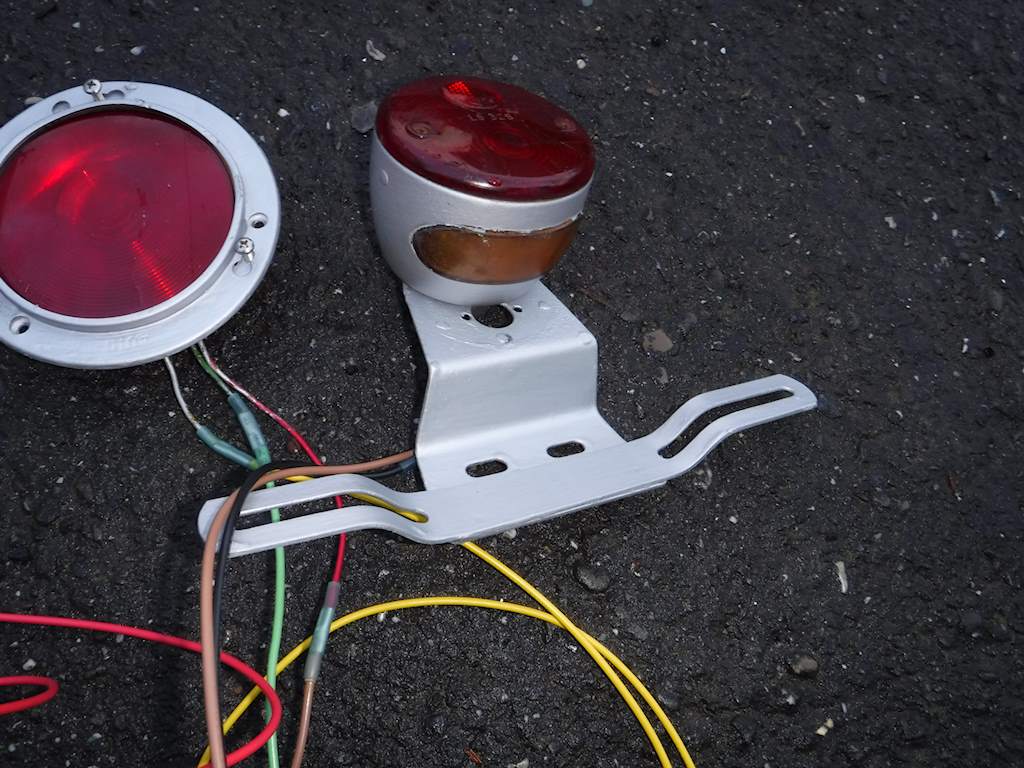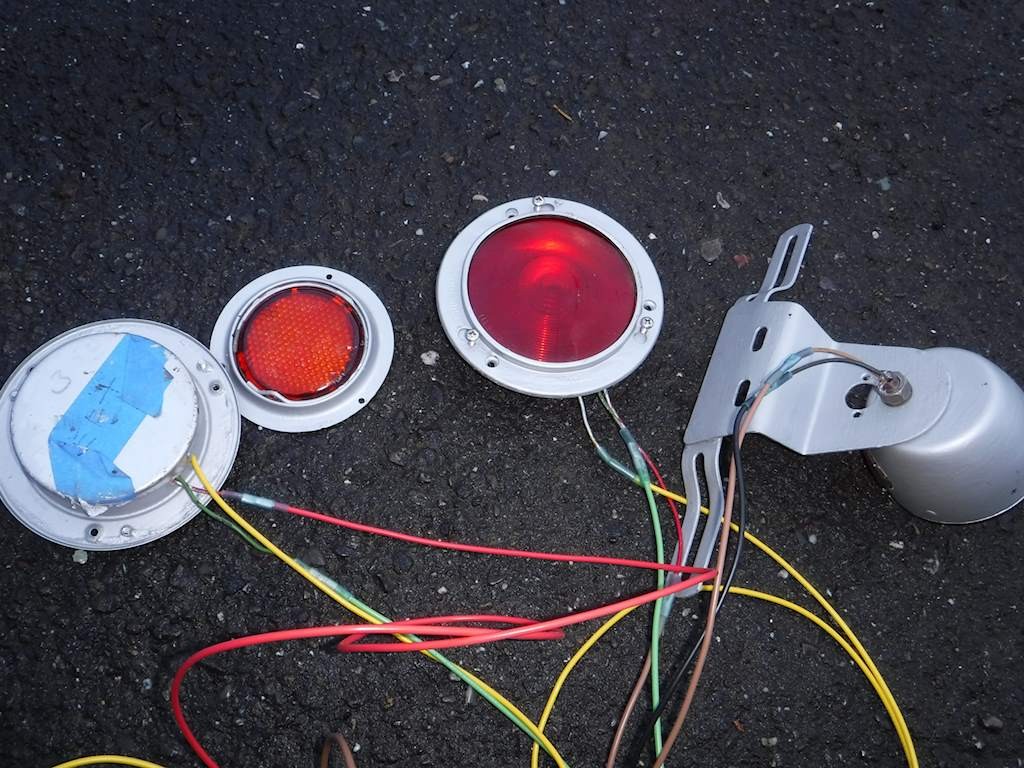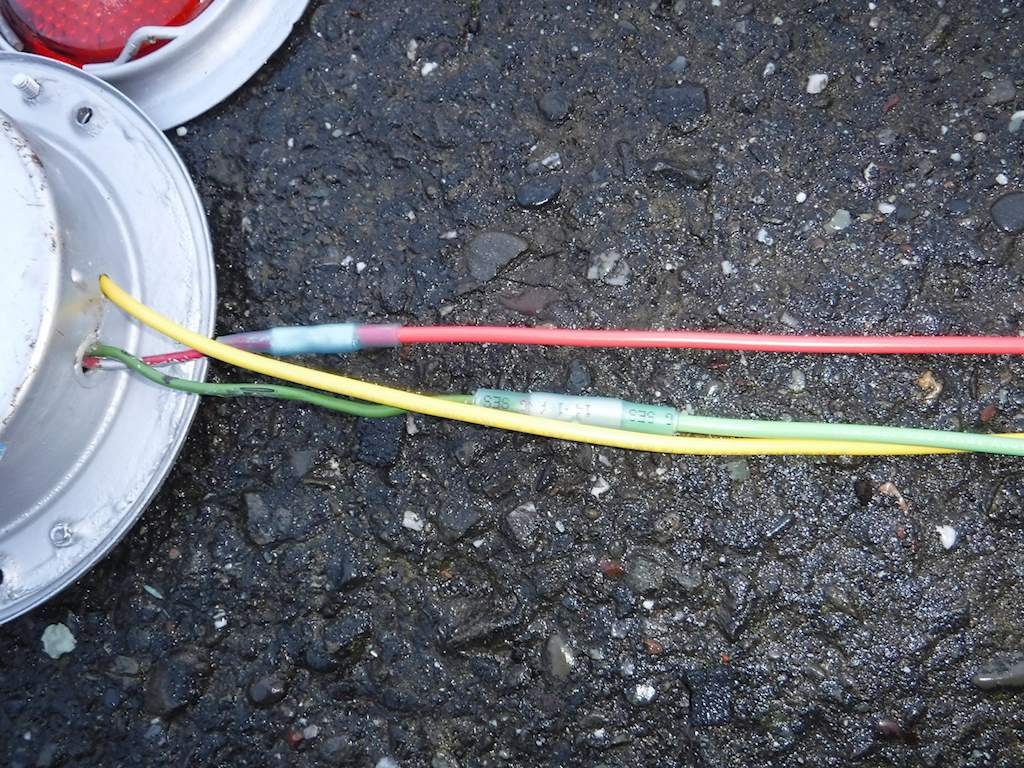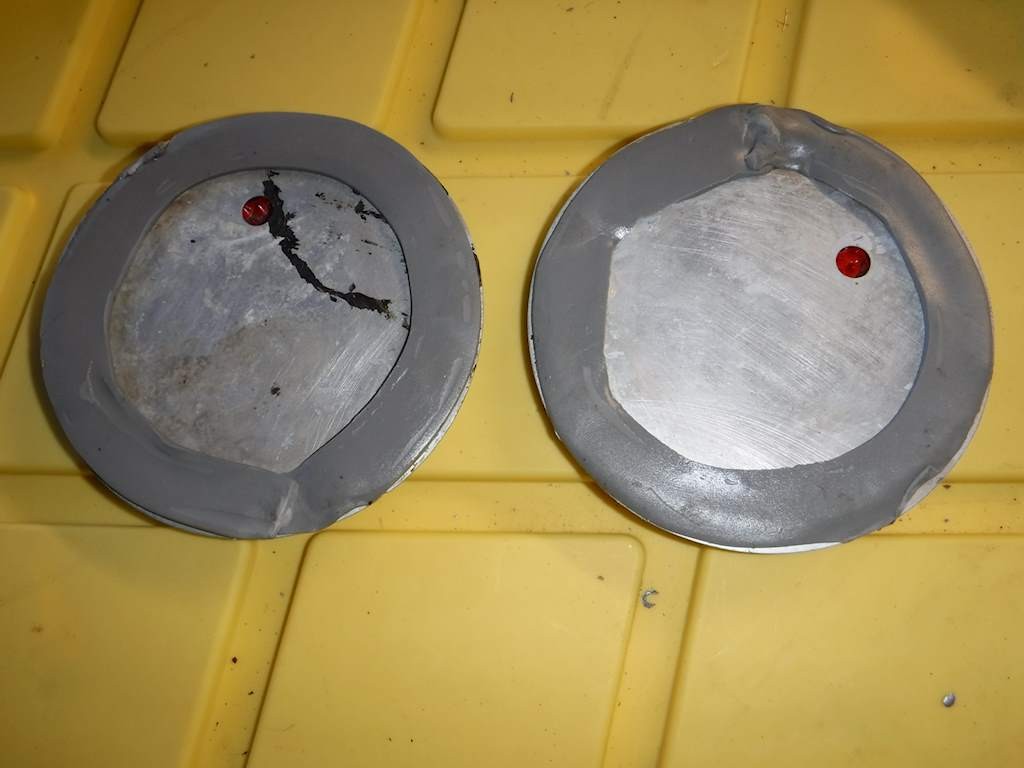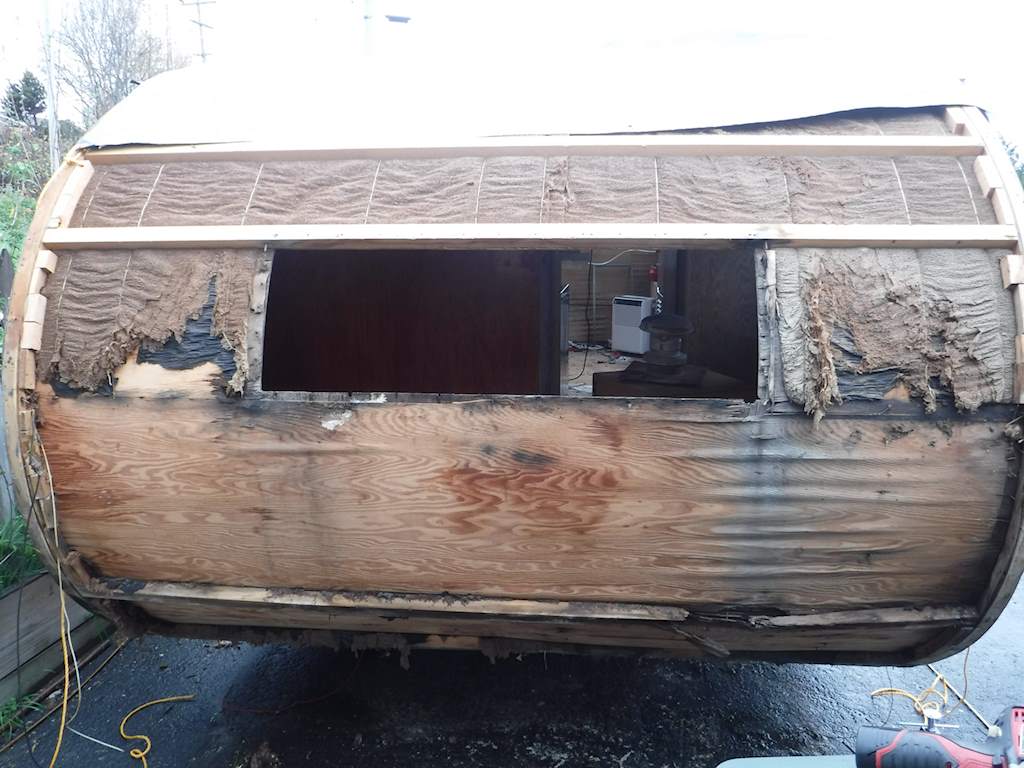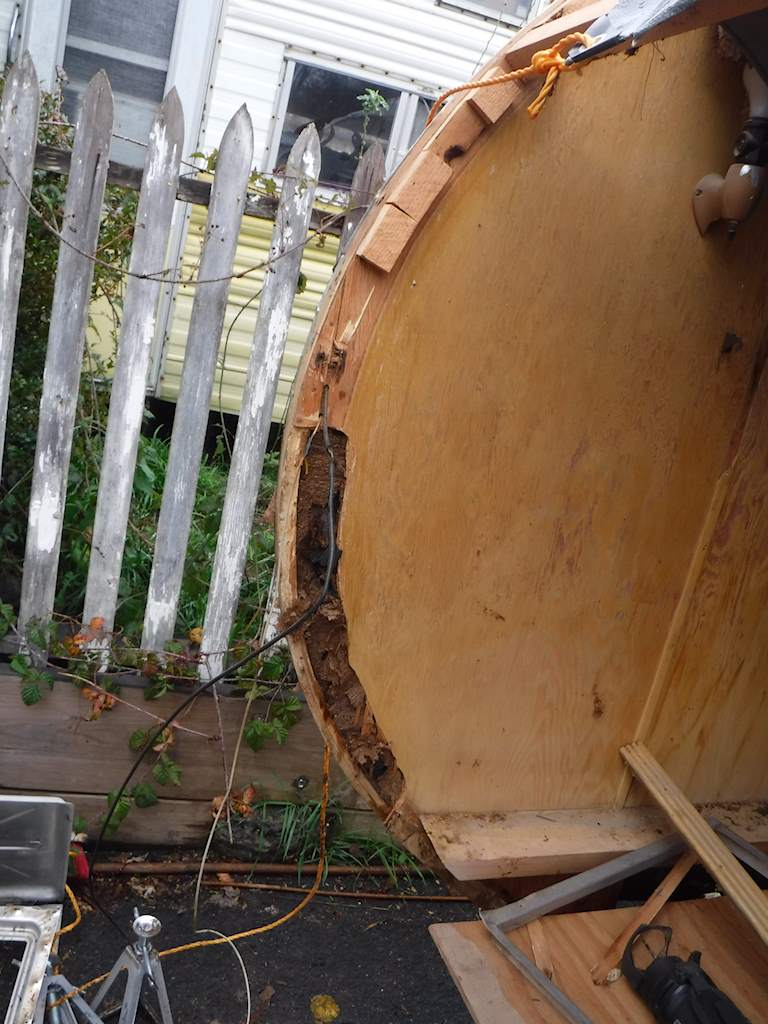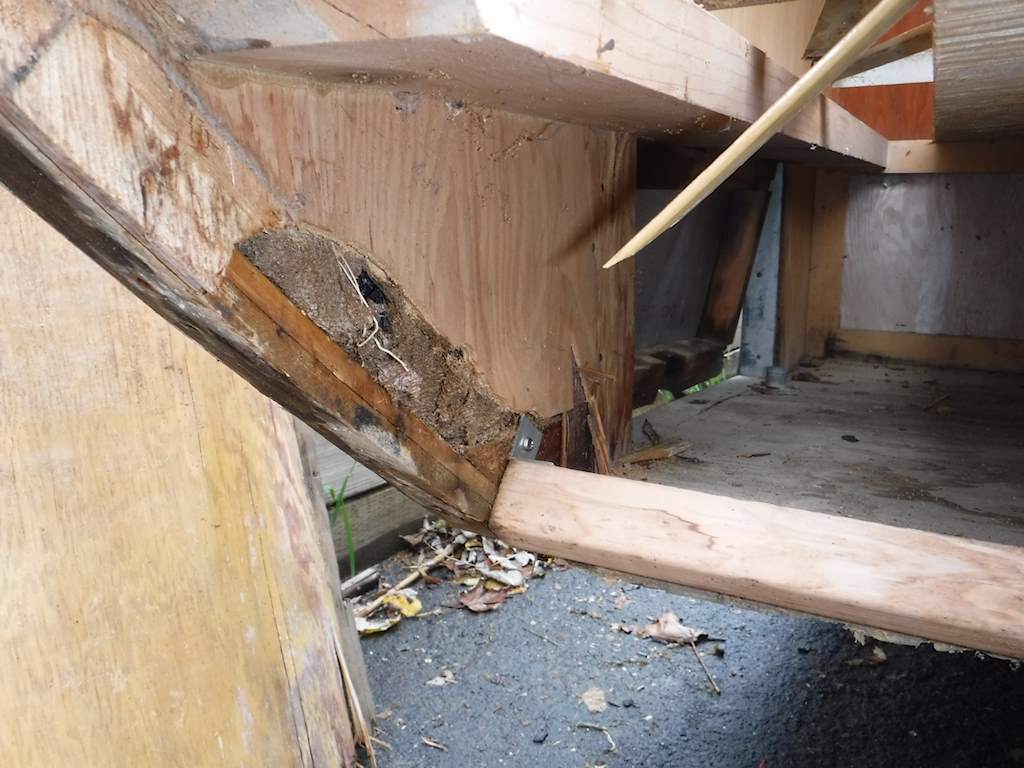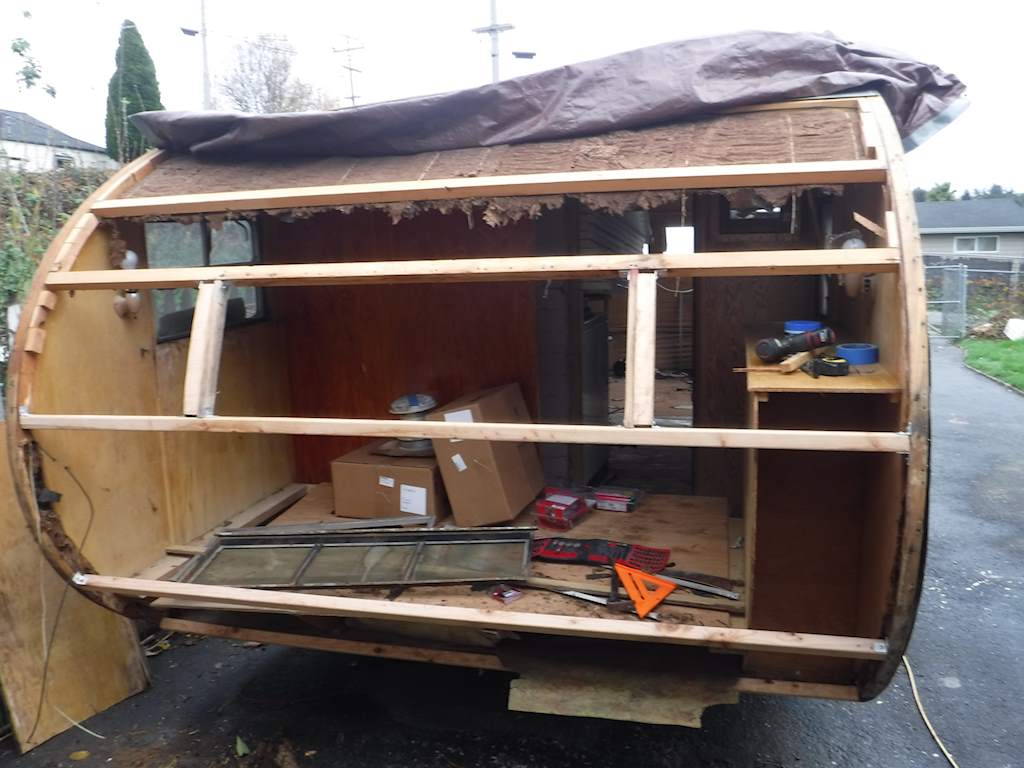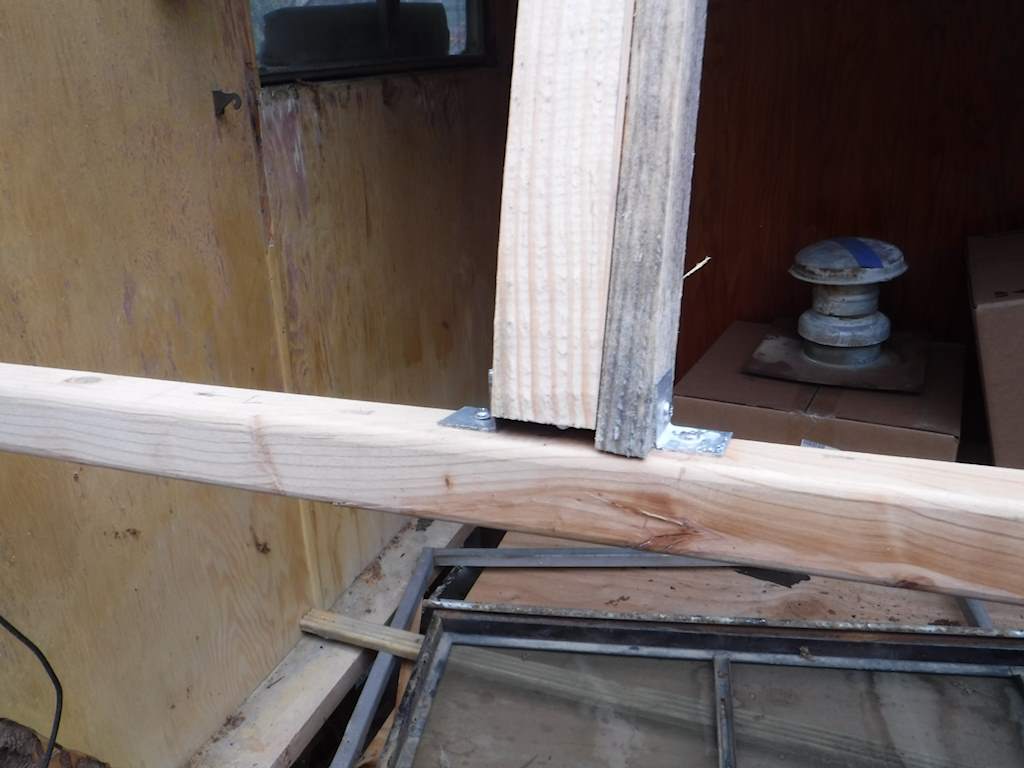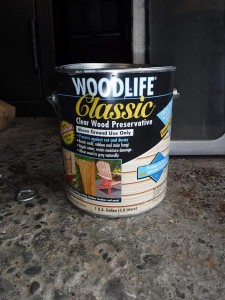Almost New Years! I made a bit more progress today.
First I got a layer of that wood preservative on the entire roof. Then I started working on cleaning off the old tar. Scraping doesn’t work because it would damage the aluminum. Acetone will get it off but slowly. That tar just laughs at denatured alcohol, which is my preferred solvent.
But heat does wonders. I should probably be using a heat gun, but I used my propane torch really low. It melts the tar and with a putty knife it comes right off. Then a little Goof-Off. So I start with this:
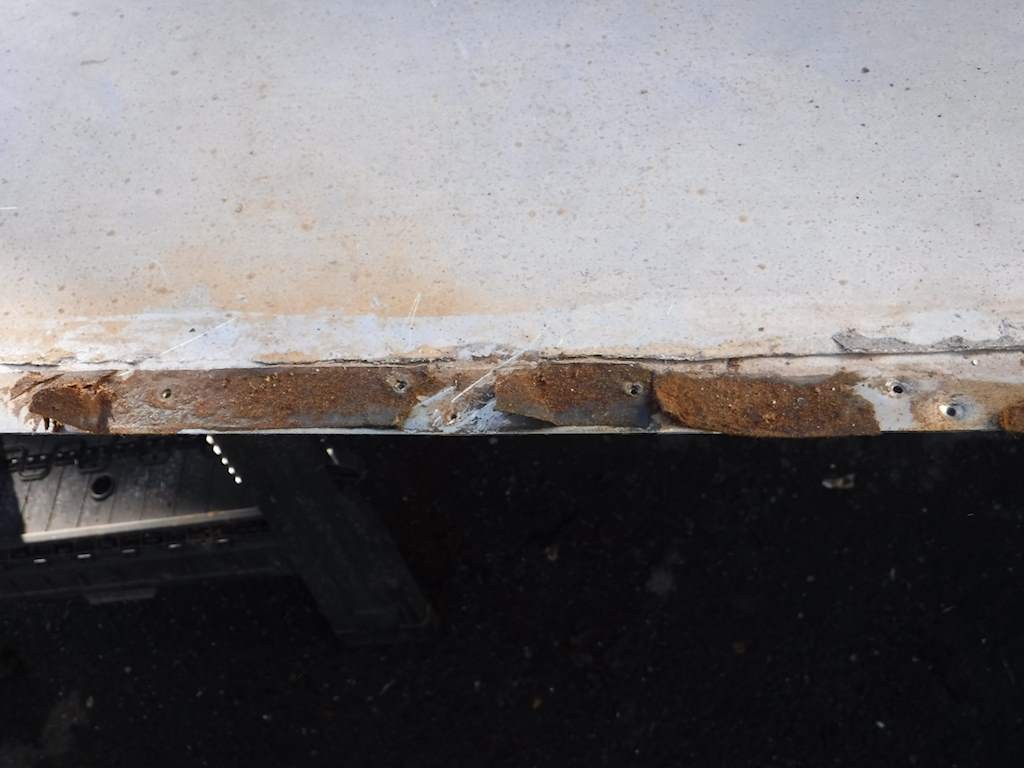
and wind up with this.
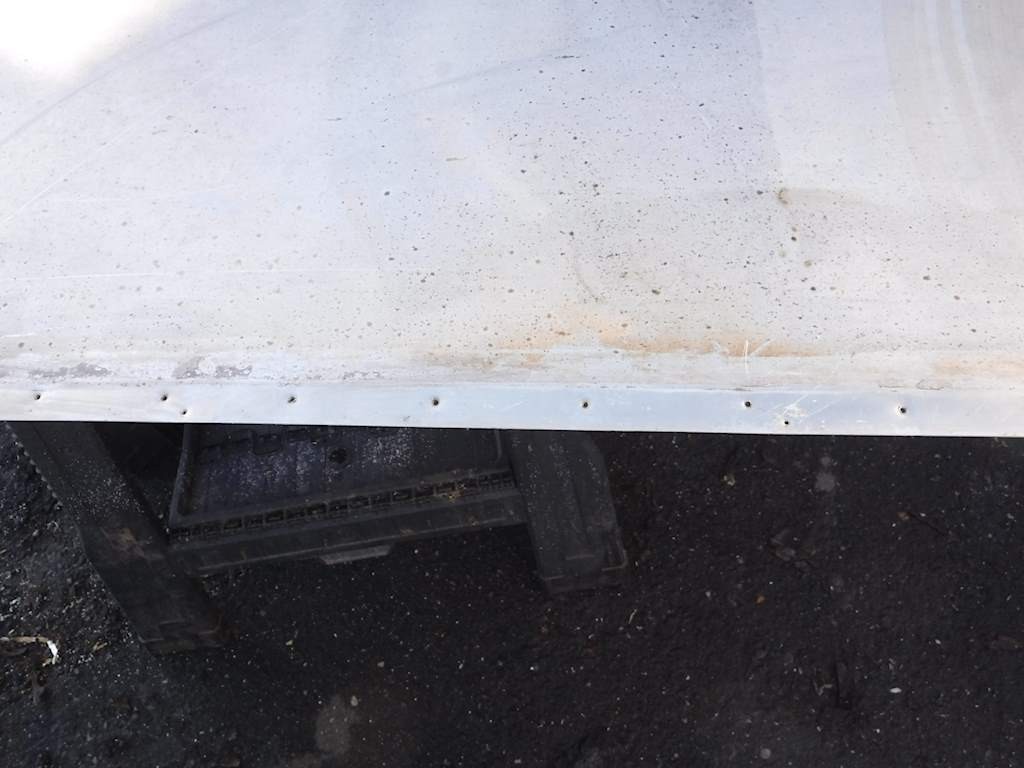
There are also some rust stains. A little Naval Jelly and this:
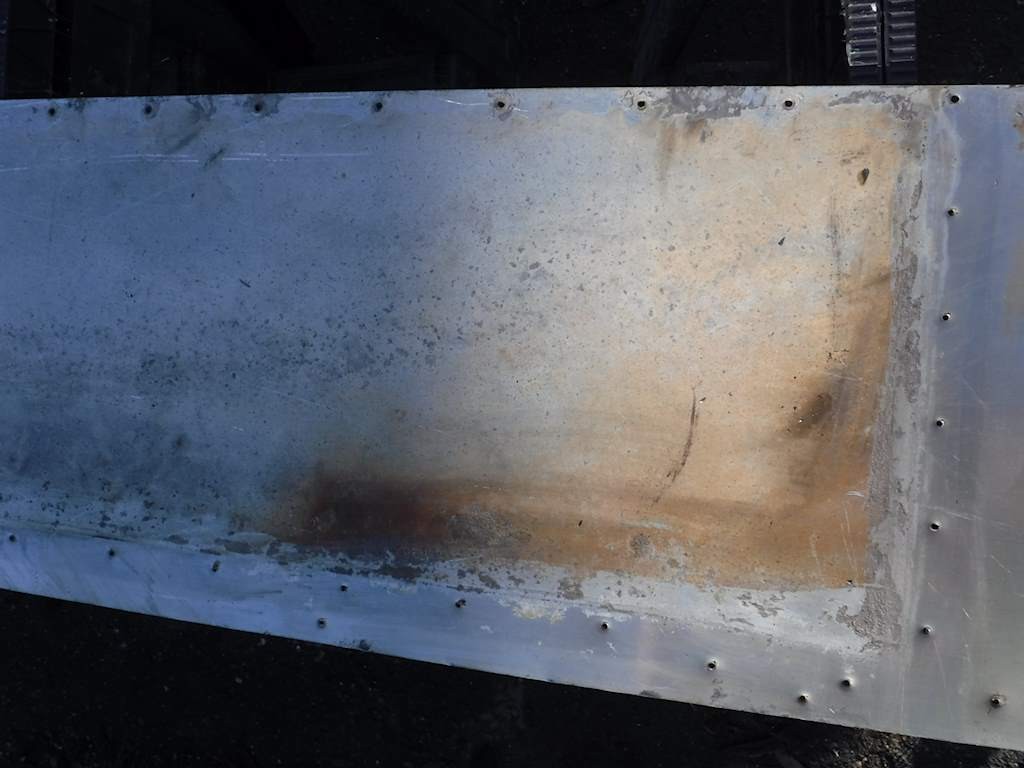
looks like this:
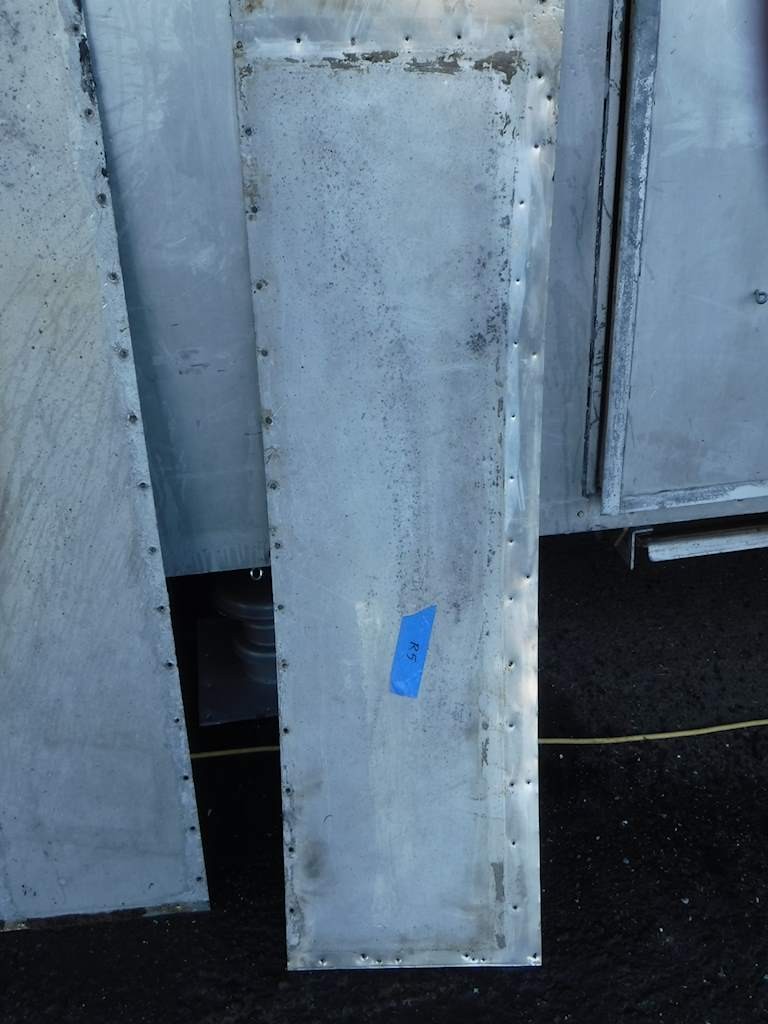
It’s the roof, so I’m not going to try to get it better than this. No need to remove more material. So I have most of the roof panels cleaned and ready to apply butyl tape. Most of the roof panels are done, and the rest will go pretty quickly.
It bothers me that the stovepipe fittings just screw to the aluminum skin. It needs some stiffness to support the butyl tape. So I added some 2×2’s. Like this.
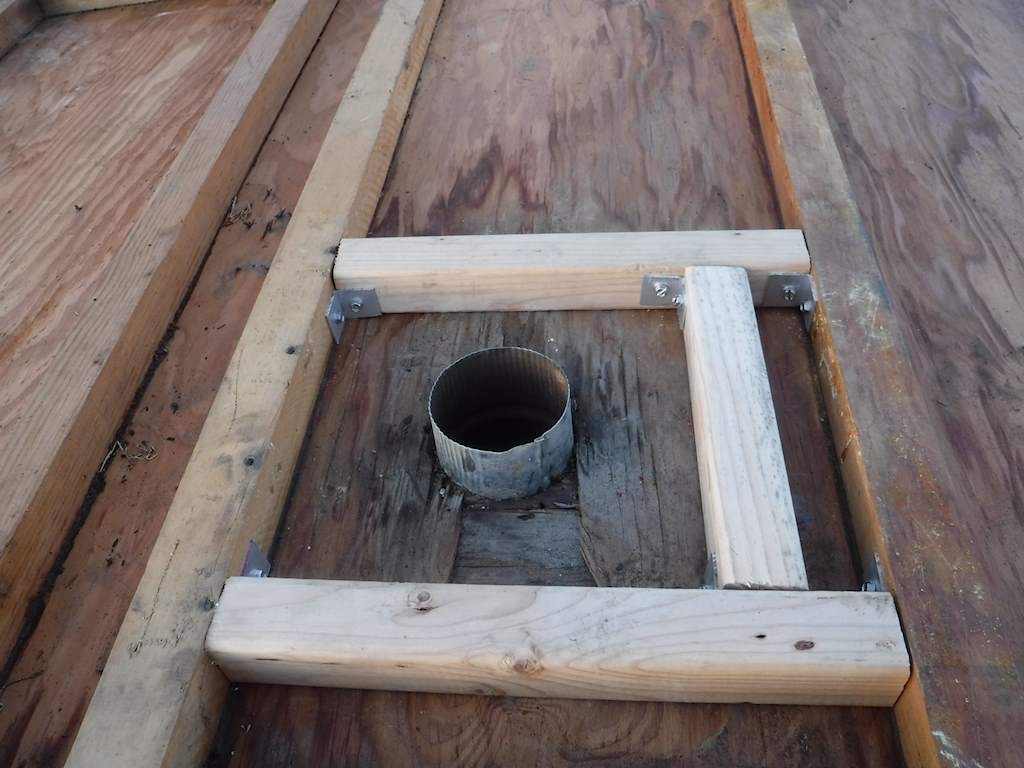
You can see plywood delamination around the stovepipe, but it’s heat- not rot. That’s the heater pipe, and you’ll notice there’s no insulation. I’ll cut out a bunch of that and put some kind of metal cover from the inside. Fortunately polyiso is good for 250 degrees F, so with an inch or two of clearance it should be fine. I’ll put a thermometer in the gap to confirm, but that won’t be for several months.
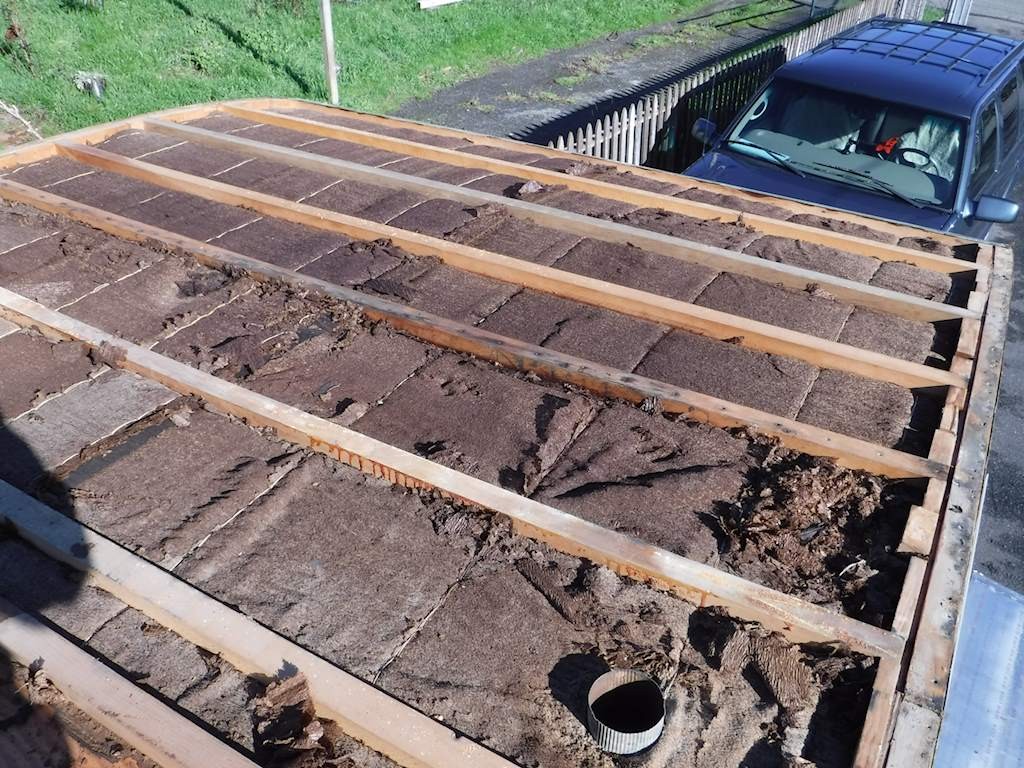
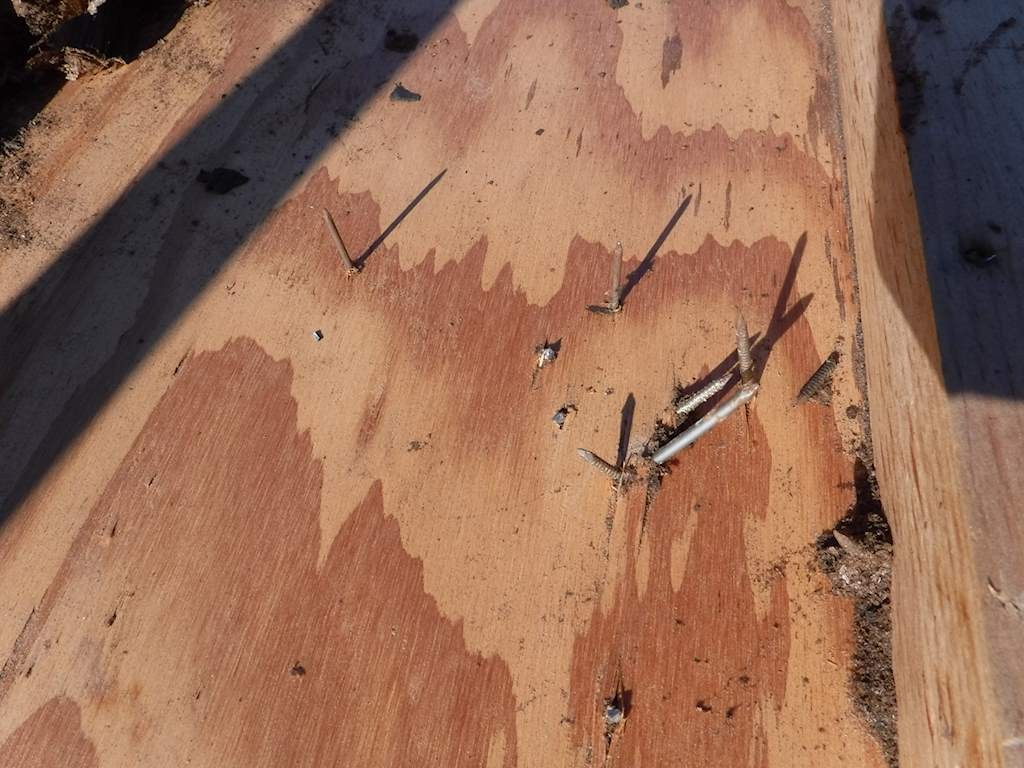
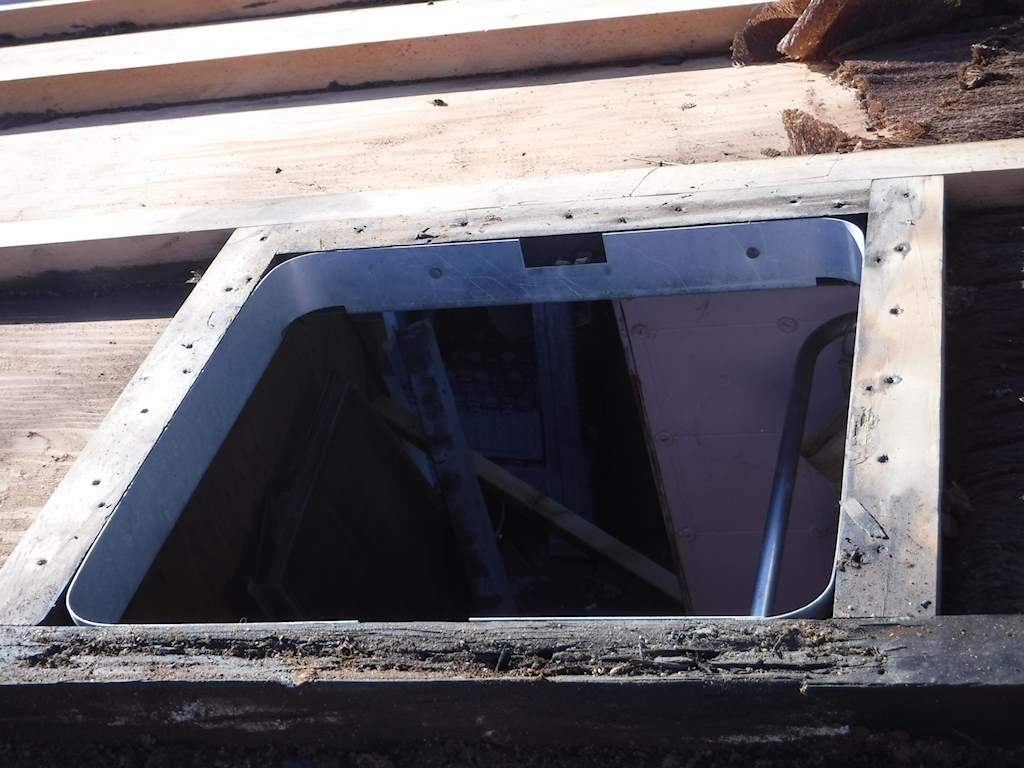
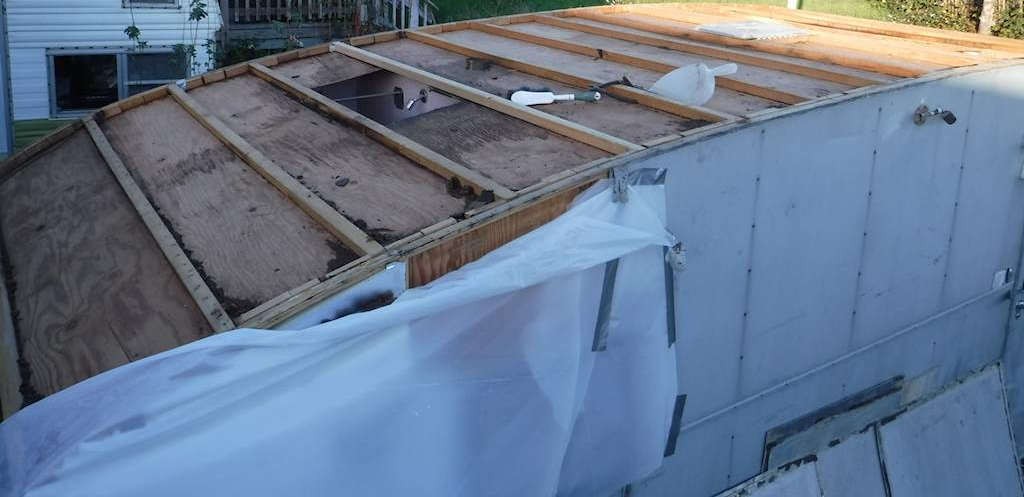
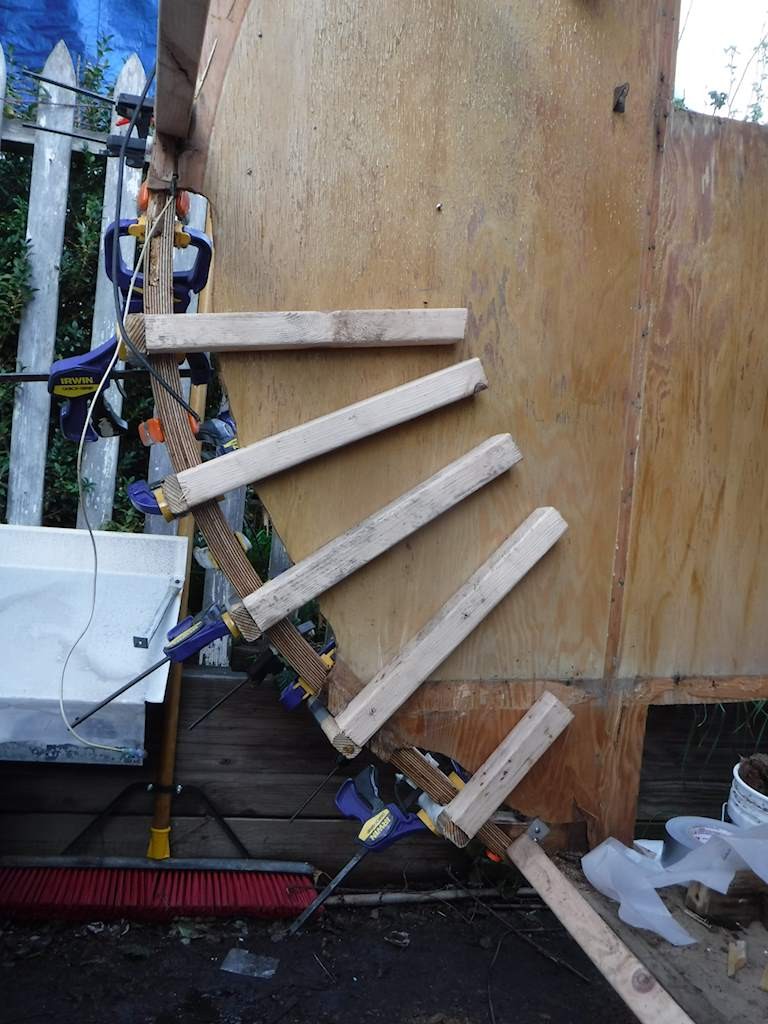
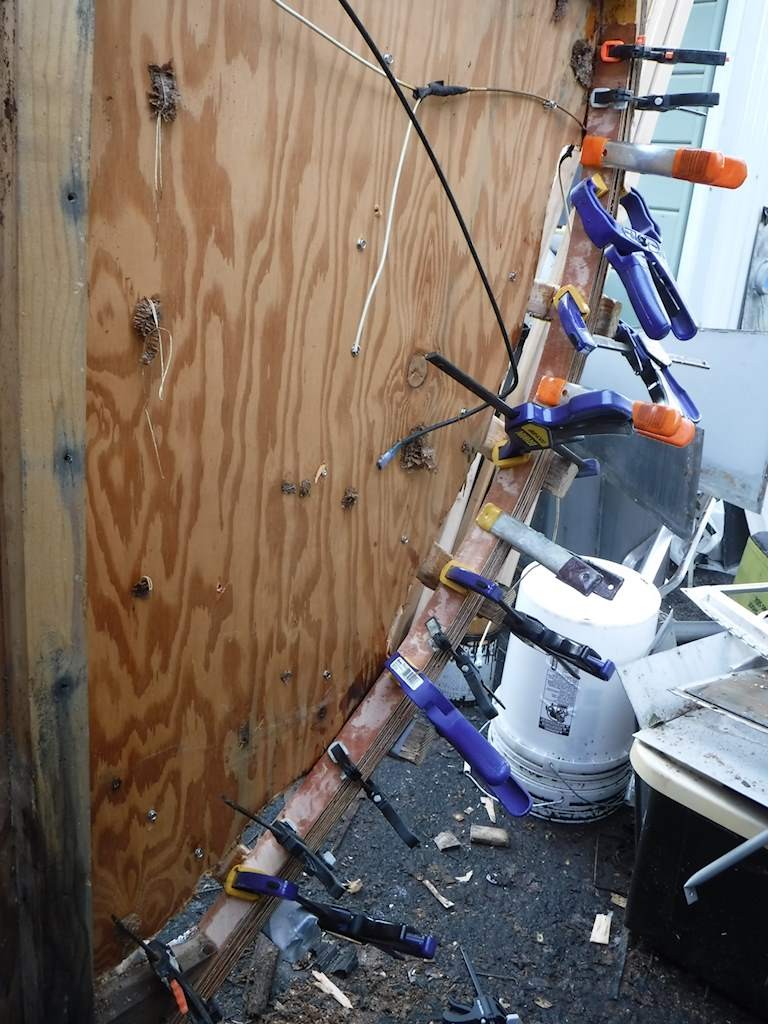
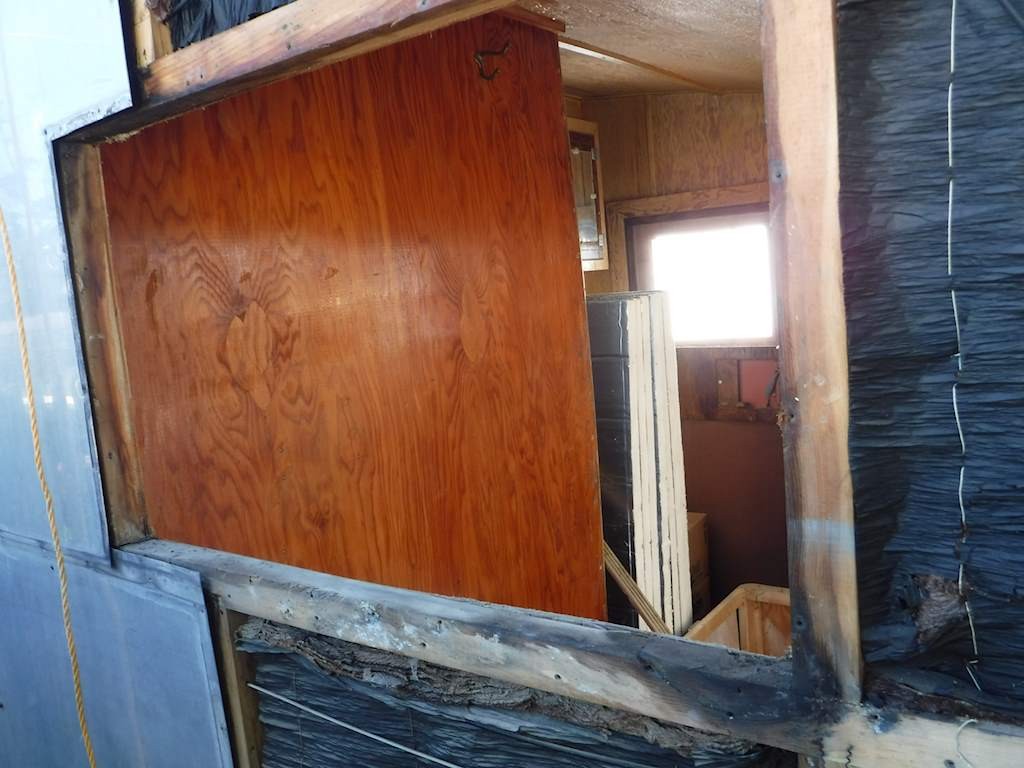
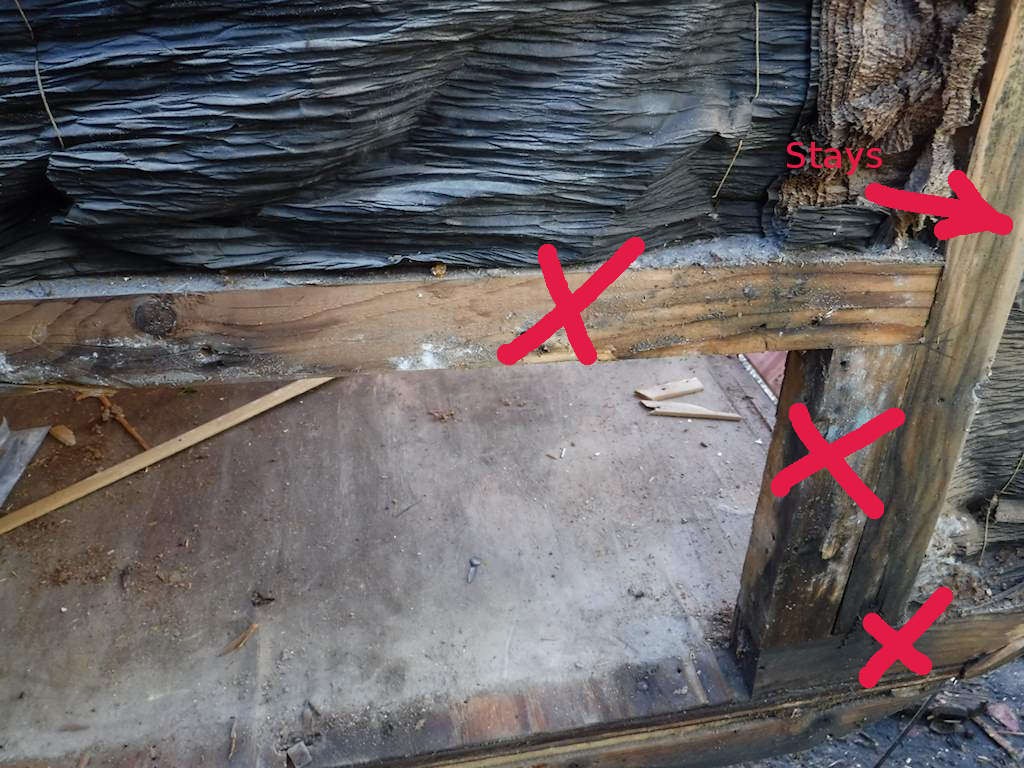
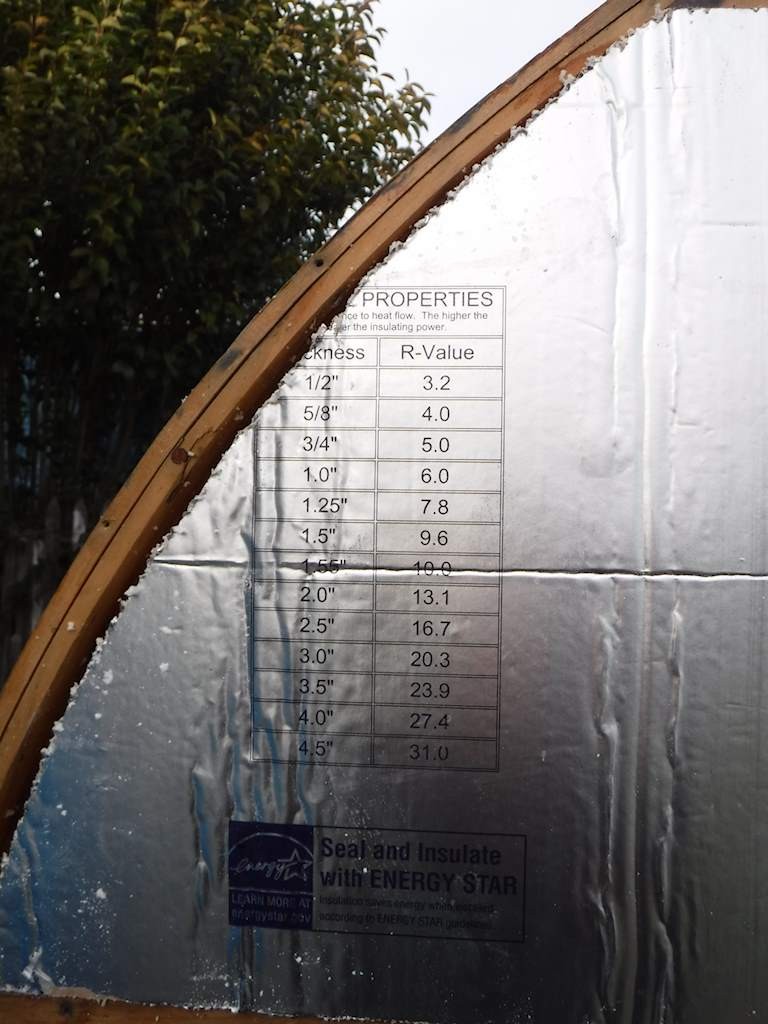
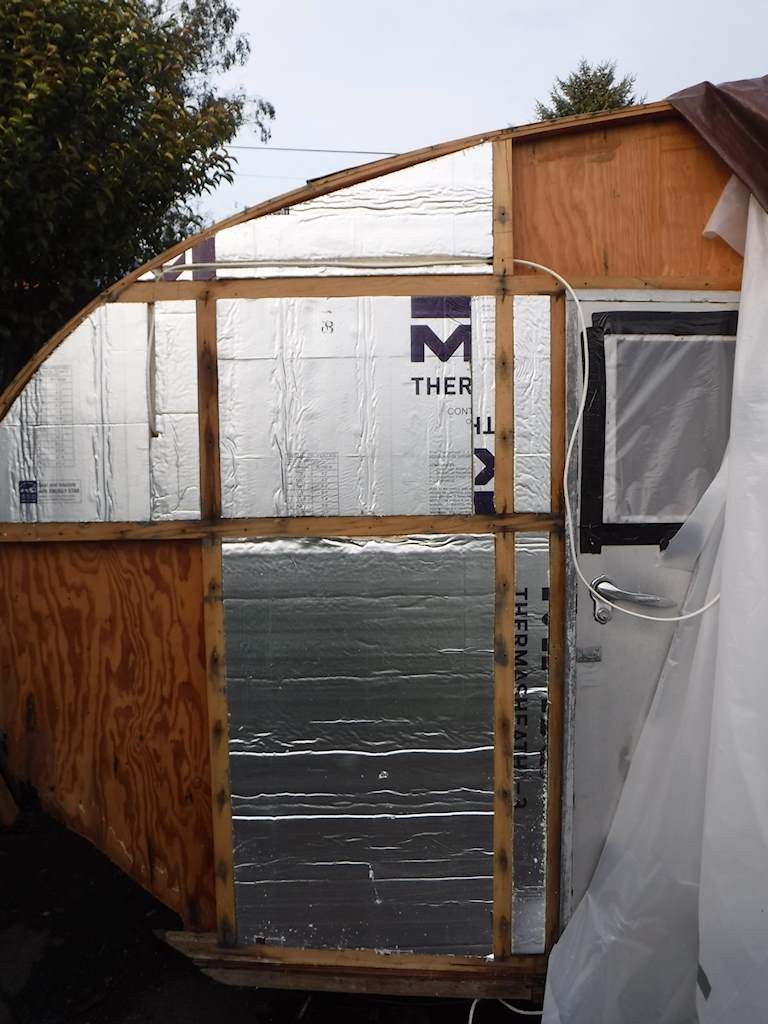
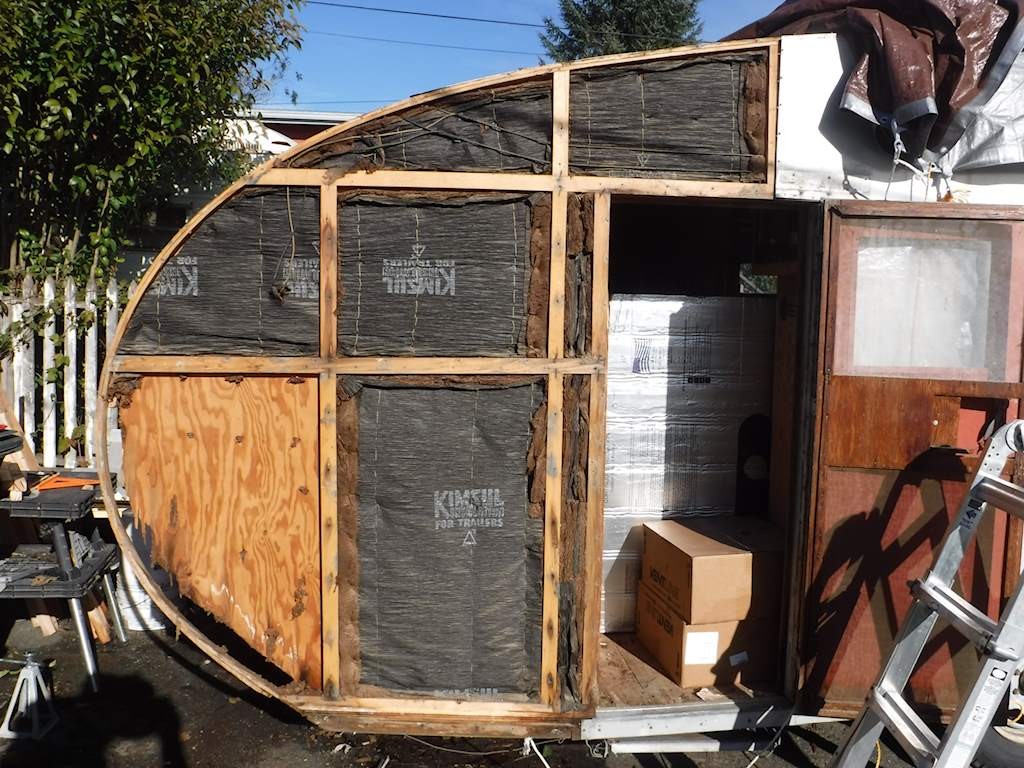
 It’s not quite as extreme as this picture makes it look, but it’s real. You can see a break just to the left of the aluminum piece, which is at the door. (At the red arrow.) The plywood floor continues between the center and rear sections, but the stringers are separate and not connected. What were they thinking? It’s not that the trailer sagged- the aluminum skin proves that. It was made that way.
It’s not quite as extreme as this picture makes it look, but it’s real. You can see a break just to the left of the aluminum piece, which is at the door. (At the red arrow.) The plywood floor continues between the center and rear sections, but the stringers are separate and not connected. What were they thinking? It’s not that the trailer sagged- the aluminum skin proves that. It was made that way.